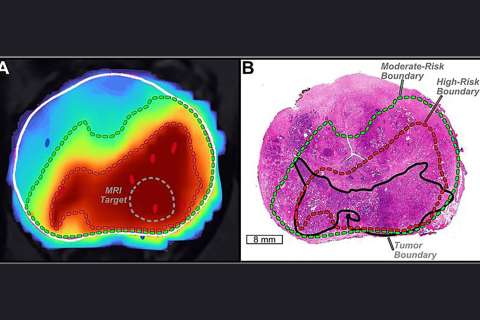Lung cancer is the leading cancer killer of both men and women in the United States — over 160,000 people will die each year from the disease. Identifying lung cancer early may make it easier to treat. The U.S. Preventive Services Task Force now urges low-dose computed tomography (CT) screening for adults with a specific smoking history.
Diagnosing lung cancer in an early stage
To help identify lung cancer in earlier stages, the National Lung Screening Trial (NLST) examined whether a lung CT scan would help clinicians find abnormalities before symptoms developed. The findings showed that this type of lung cancer screening reduced the risk of dying from lung cancer for people considered high risk.
As a result, people are encouraged to undergo regular lung cancer screening if they meet each of these criteria:
- You have a history of heavy smoking, which is equivalent to smoking two packs a day for 15 years or one pack a day for 30 years
- You are a current smoker or quit within the past 15 years
- You are between 55 and 80 years old
You no longer need to be screened once you reach the age of 81 or if you haven’t smoked in more than 15 years. Lung CT scans are also not recommended if you have health problems that make you a poor candidate for surgery, which is the treatment for early-stage lung cancer.
Early signs of lung cancer are rare
Lung cancer symptoms often don’t appear until the disease has progressed to an advanced stage when it is typically more difficult (or even impossible) to treat. In many cases, symptoms are mistaken for other lung-related problems, which can delay a cancer diagnosis. The symptoms of lung cancer include:
- Shortness of breath or wheezing
- A persistent cough
- Coughing up blood, spit or phlegm
- Chest pain that worsens with coughing, deep breathing or laughing
- Recurring bronchitis or pneumonia infections
- Fatigue or weakness
- Loss of appetite and weight loss
Because there are risks associated with lung cancer screening, it is recommended only for patients who have no symptoms but who are considered high risk because of their smoking history and age. Risks related to lung CT scans include:
- False findings that result in further tests or procedures
- Identifying other cancers that aren’t problematic or don’t need treatment
- Radiation exposure, particularly for those who have repeat lung CT scans
If you meet the criteria for being at a higher risk for lung cancer, talk with your primary care physician about being screened. You can also contact the UCLA Lung Cancer Screening Clinic for more information.



